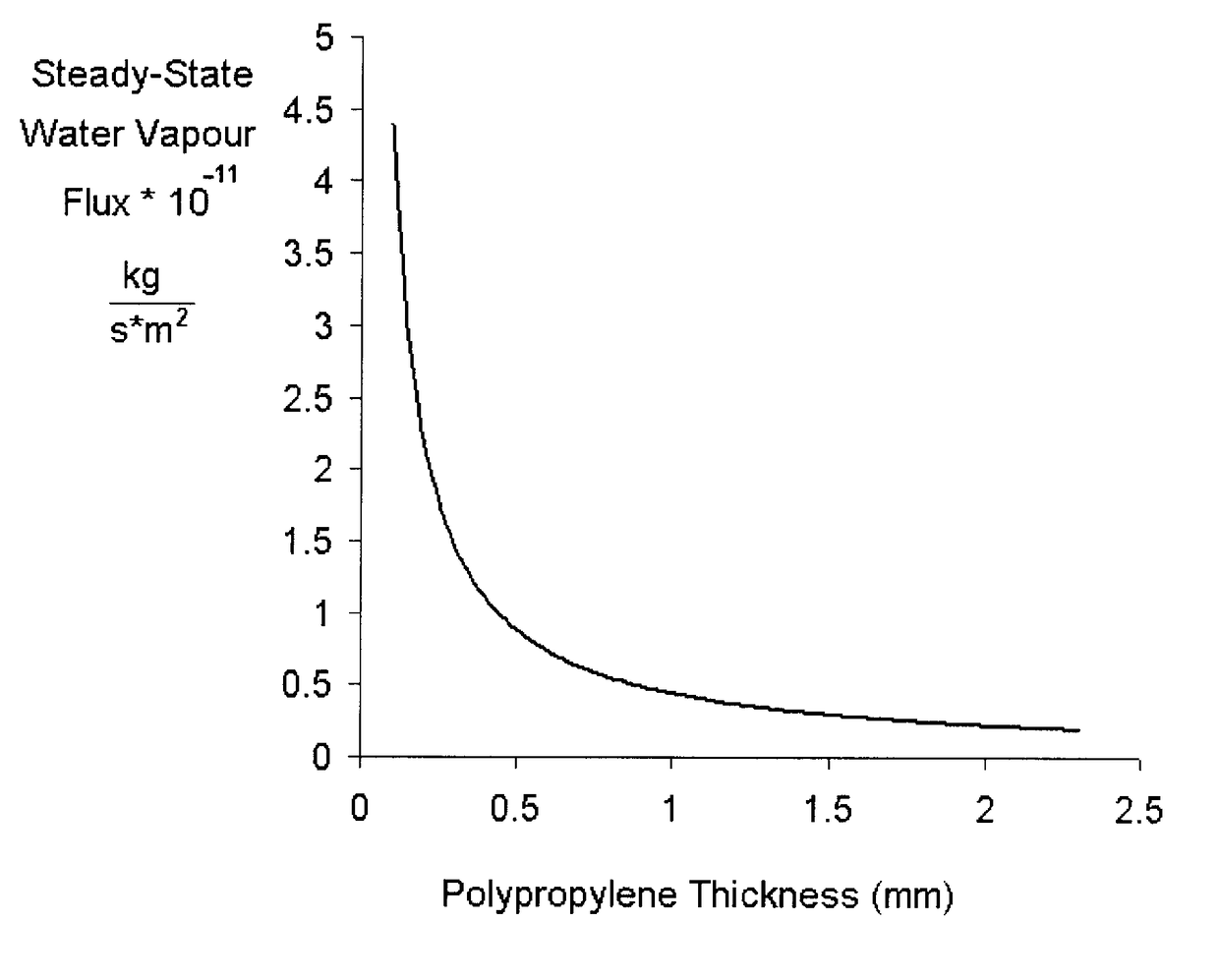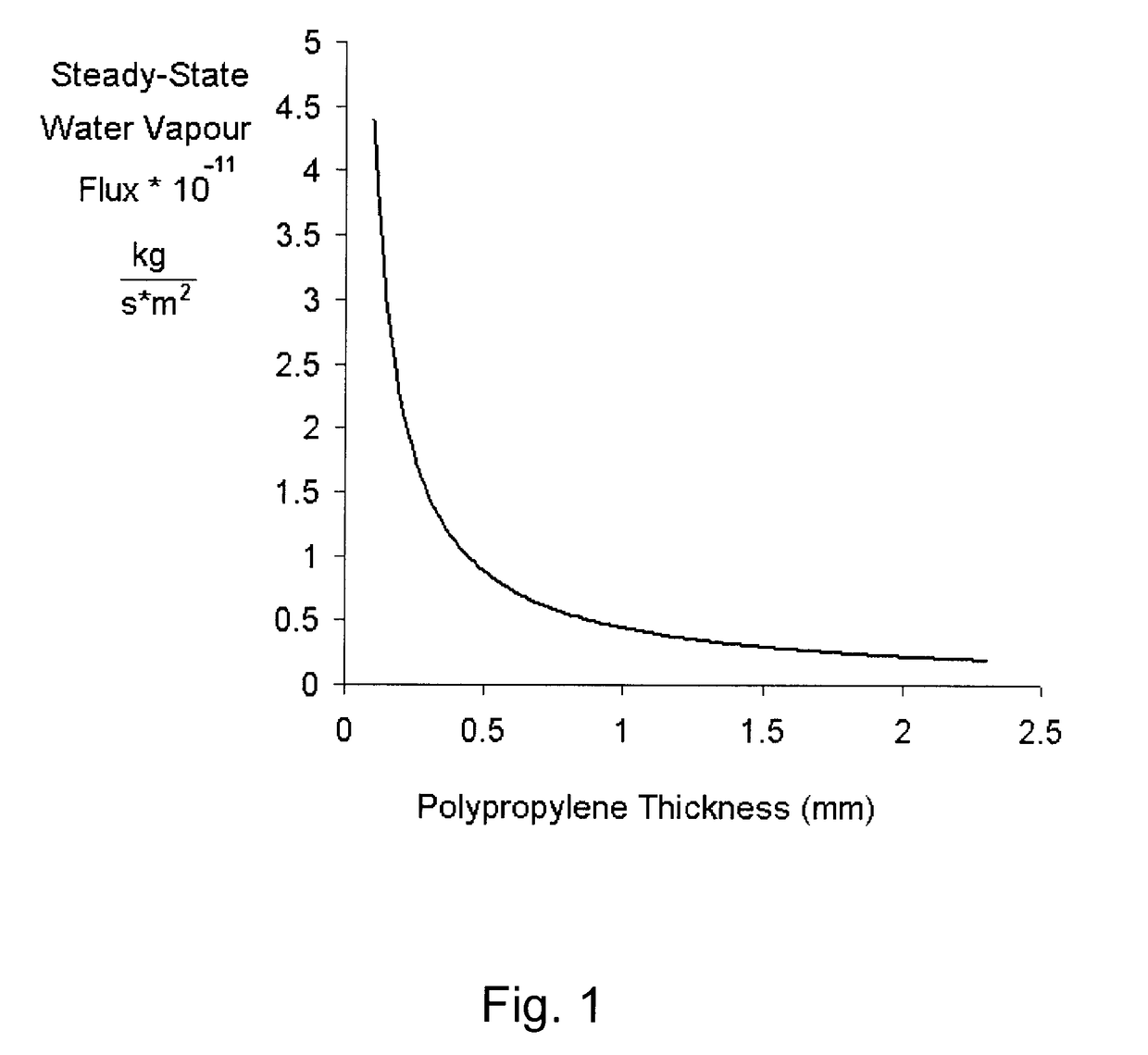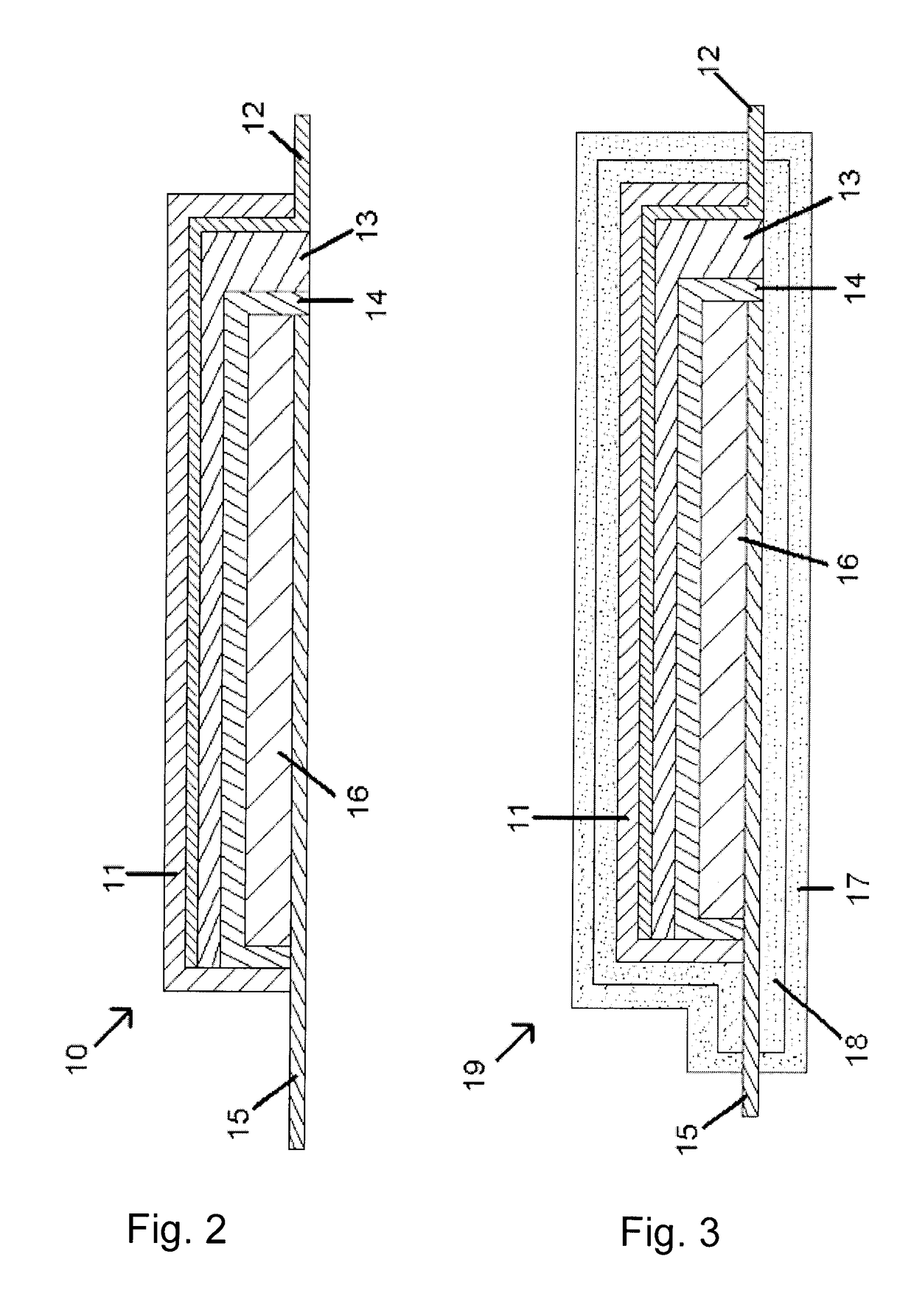Thin film electrochemical cell with a polymer double seal
a polymer double-seal, electrochemical cell technology, applied in cell components, electrochemical generators, jackets/cases materials, etc., can solve the problems of insufficient resistance, prone to many problems, and inclusion of ceramic or metal physical barriers, so as to prevent the diffusion of deleterious substances, and reduce the cost of inclusion
- Summary
- Abstract
- Description
- Claims
- Application Information
AI Technical Summary
Benefits of technology
Problems solved by technology
Method used
Image
Examples
Embodiment Construction
[0040]Reference may now be made to FIG. 2 which illustrates an electrode assembly 10 of a thin film electrochemical cell. The electrode assembly 10 includes a cathode current collector 15, a cathode 16, an electrolyte 14, an anode 13 and an anode current collector 12. The electrode assembly 10 further includes a passivation layer 11, which may not be included in alternate embodiments. Alternate embodiments may further comprise separator layers within the electrode assembly 10, which are not pictured in the preferred embodiment shown. The cathode 16 is preferably made of a lithium intercalation compound, preferably a metal oxide such as LiNiO2, LixMn2O4 or LiCoO2. The electrolyte 14 is preferably a composite polymer electrolyte as disclosed in U.S. Pat. No. 6,753,114, which is specifically incorporated herein by reference. Alternate embodiments may include other solid or liquid electrolytes. The anode 13 is preferably made of a tin compound, such silicon-tin oxynitride, SiSnON, when ...
PUM
| Property | Measurement | Unit |
|---|---|---|
| thickness | aaaaa | aaaaa |
| emissivity | aaaaa | aaaaa |
| thickness | aaaaa | aaaaa |
Abstract
Description
Claims
Application Information
 Login to View More
Login to View More - R&D
- Intellectual Property
- Life Sciences
- Materials
- Tech Scout
- Unparalleled Data Quality
- Higher Quality Content
- 60% Fewer Hallucinations
Browse by: Latest US Patents, China's latest patents, Technical Efficacy Thesaurus, Application Domain, Technology Topic, Popular Technical Reports.
© 2025 PatSnap. All rights reserved.Legal|Privacy policy|Modern Slavery Act Transparency Statement|Sitemap|About US| Contact US: help@patsnap.com



